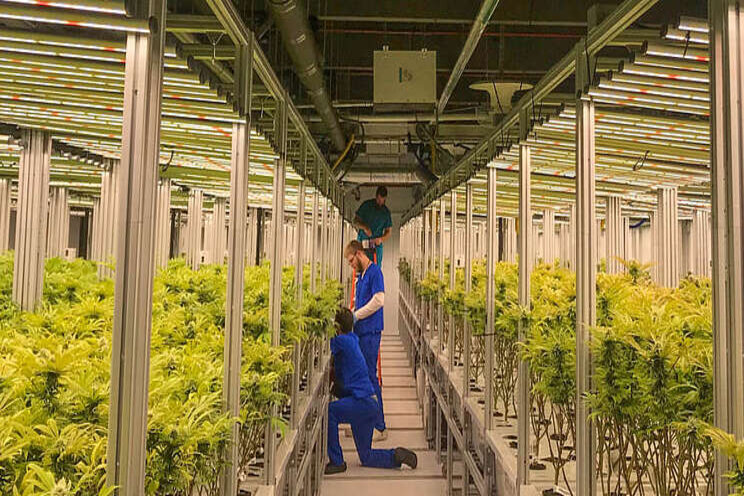Tips on grow room design
Added on 23 November 2020

We had the pleasure of having a long and highly interesting talk with Bruce in order to learn more about setting up a commercial grow room and important factors of commercial greenhouse construction.
Here are some important takes from that talk:
When it comes to cannabis grow room design, the focus is three-fold: workflow, plant security, which means a design that reduces the probability of infestation, and theft - employee theft is a big problem in cannabis which needs to be addressed in the design process.
"The methodology determines the proportionality in the room's construction"
At the end of the day a cultivation facility is a business and we know all the details that need to be considered and how they all connect to the business' bottom line.
When it comes to cultivation methodology, most often the location you want to work in dictates the grow facility. Depending on where you are located there might be rules on what kind of facility you can grow in, and where. For example, are you permitted to build an outdoor grow? or greenhouse grow?
Many companies have a big facility but they start their cultivation operation in a smaller scale grow room. That is why it is important to plan ahead for future expansion before you start building.
For example, using a pre-manufactured wall system can save you time. From a taxation perspective, this system is considered equipment, therefore you get an accelerated depreciation versus conventional stick-built. This has huge tax ramifications. In addition, it's important to maintain a safe and clean environment as you build more grow rooms adjacent to your current cultivation. "You really need to consider how are you going to expand and one of the reasons I like pre-manufactured walls is because most of them will go together without a screwdriver or without a drill and so not creating dust or debris" says Bruce.
"It is really important that you build your foundation to accommodate your final grow, so let's put in all the drainage and all the water supply lines now. I know where they're going to go and I don't want to be cutting concrete. I don't want to be adding things like that after I started growing. It's the same reason you need to plan on your electrical capacity initially for your full rollout end result".
With so many years of growing under his belt, Bruce's thought process is fast and analytic. In order to come up with the right recommendations for the best commercial LED lights, best grow room controllers, rolling grow benches, and so on, Bruce calculates every factor available. "The methodology determines the proportionality in the room's construction. Are you growing a sea of green or 6ft plants? Are we growing in living soil or aeroponically. What is your business plan? Mass consumer grower or looking to be craft high-end grower? All these impact the design of the facility and its capacity."
Bruce mentioned two notions we know growers sometimes forget, one of them is to remember to think about expenses from all angles "While many plan inexpensive CapEx grow methodologies, for example, pots and cocos, what they don't take into account is the cost and labor costs involved in this kind of methodologies." And the second is the human factor. As much as we all support grow room controllers and agtech solutions, he reminds us that the human factor is a big part of a successful grow and that a cultivation facility with processes that are set in a way that makes the worker's job "too easy" is up for a downfall.
Source and Photo Courtesy of GroAdvisor Worldwide
Source: GroAdvisor
More news















